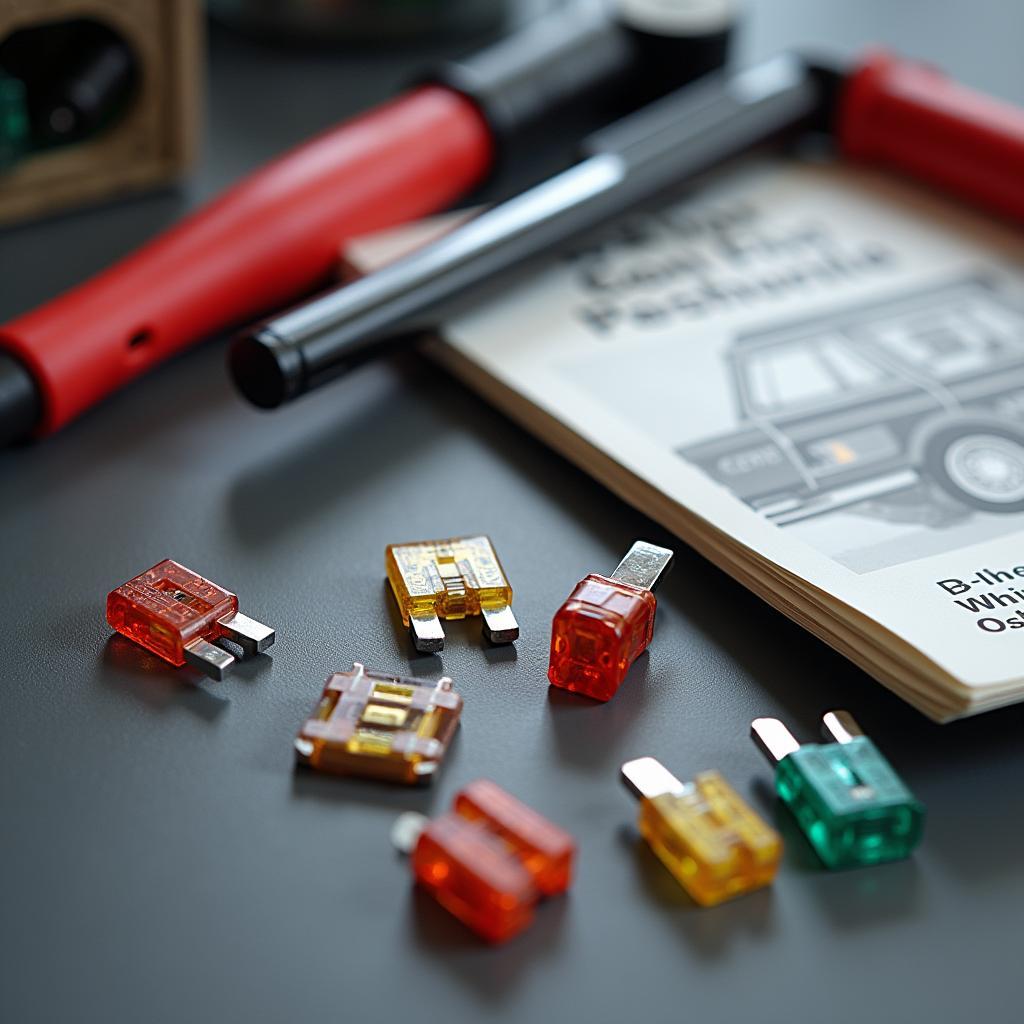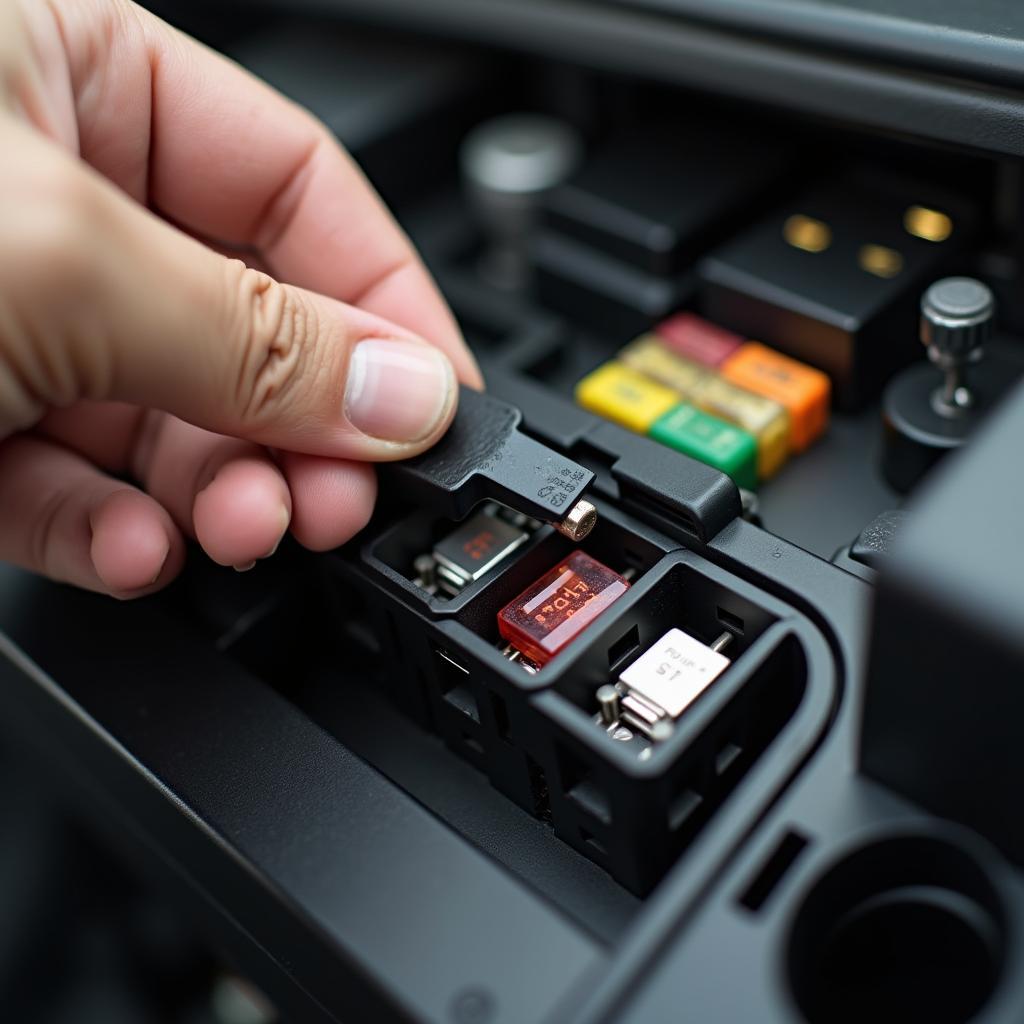Sometimes it’s a soft click, other times a strange smell – and suddenly the interior lights fail, the radio quits, or the AC gives up the ghost. Often, it’s the little things that cause big problems in a car. But don’t worry, in many cases the culprit is quickly found: a blown fuse. But how do you change a fuse correctly? No need to panic, in this step-by-step guide, we’ll show you how to get those little helpers in your car back up and running in no time.
 Fuse replacement tools
Fuse replacement tools
Before we start, however, an important note: Caution is advised when working on the fuse box. Always proceed calmly and carefully to avoid damage to the vehicle or injury. If you are unsure, it is better to consult a specialist.
What is a Fuse and What Does it Do?
Imagine your car as a complex network of electrical wires. Electricity flows through these wires, supplying power to your headlights, radio, or power windows. If too much current flows through a wire, it can overheat and, in the worst case, even cause a fire.
This is where fuses come in: They act as a kind of safety belt for your car. They consist of a thin wire that melts when too much current flows through it, interrupting the circuit. This prevents damage to the sensitive electronic components of your vehicle.
 Identifying a blown fuse
Identifying a blown fuse
Changing a Fuse Step-by-Step
Now to the actual question: How do you change a blown fuse? Simply follow our instructions and your car will soon be shining brightly again:
- Identify the fuse: Before you start replacing it, you first need to find the correct fuse. In your vehicle’s manual, you will find a fuse box diagram that shows you exactly which fuse is responsible for which function.
- Locate the fuse box: The fuse box is usually located in the engine compartment or inside the vehicle, for example in the glove compartment or under the steering wheel.
- Remove the fuse: In the fuse box, you will find small pliers that you can use to easily pull out the defective fuse.
- Insert the new fuse: When inserting the new fuse, make sure that it has the same amperage rating as the defective fuse. The amperage is printed on the fuse.
- Close the fuse box: After you have inserted the new fuse, you can close the fuse box again.
 Inserting a new fuse
Inserting a new fuse
Frequently Asked Questions About Changing Fuses
- Can I use any fuse? No, only use fuses with the correct amperage.
- What if the new fuse blows immediately? In this case, there is a more serious fault in the circuit. In this case, be sure to visit a workshop.
- Where can I find replacement fuses? Replacement fuses are available at any well-stocked auto parts store or hardware store.
More Helpful Tips for Car Owners
Changing a fuse is just one of many small repairs you can do on your vehicle yourself. On Autorepairaid.com you will find numerous other instructions and tips on the topic of car repair, for example on the topic of VW Golf Plus Fuses or VW Polo 6R Fuse Box.
Conclusion
Changing a fuse is not rocket science. With our step-by-step instructions and a little manual skill, you can master this small repair in no time. This not only saves you time and money, but also gives you the good feeling of having repaired something on your car yourself.
Should you still need help, our car experts are happy to assist you with advice and support. Simply contact us via our website – we are there for you 24/7!
